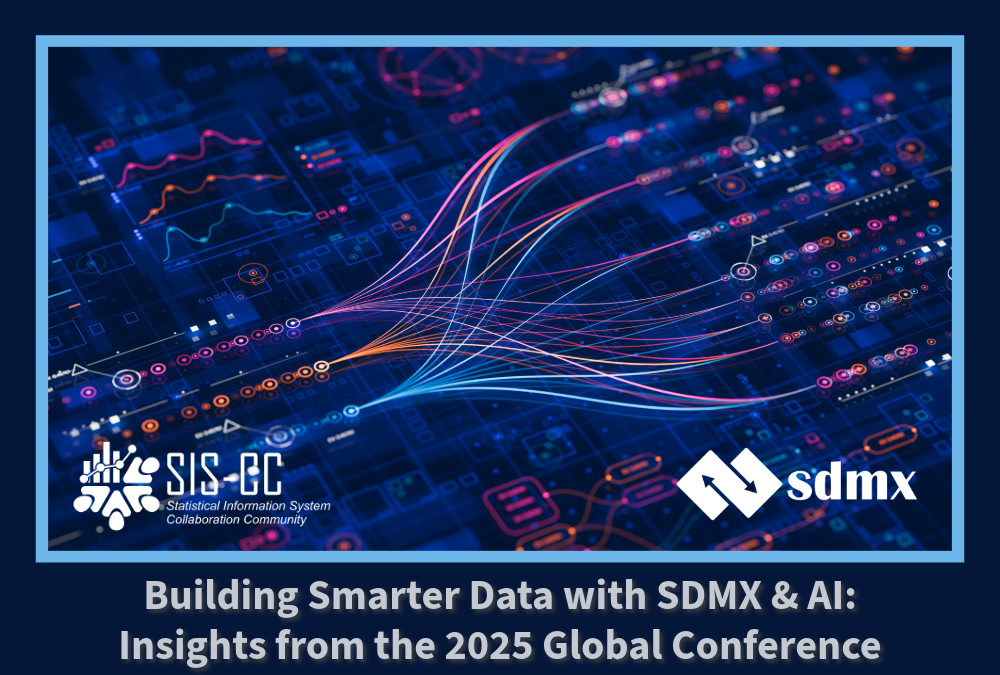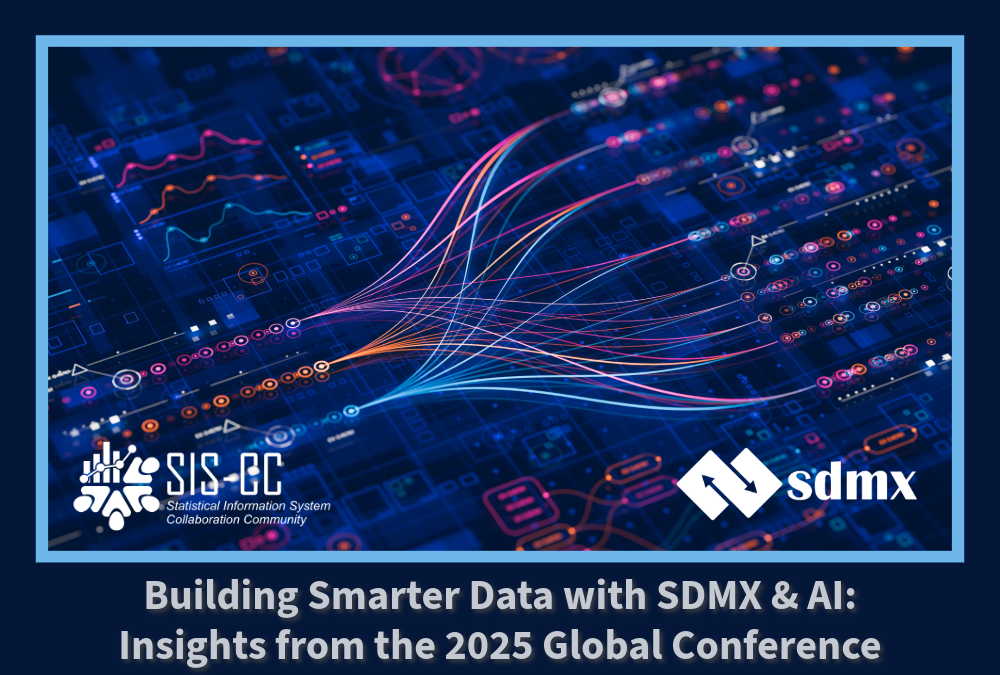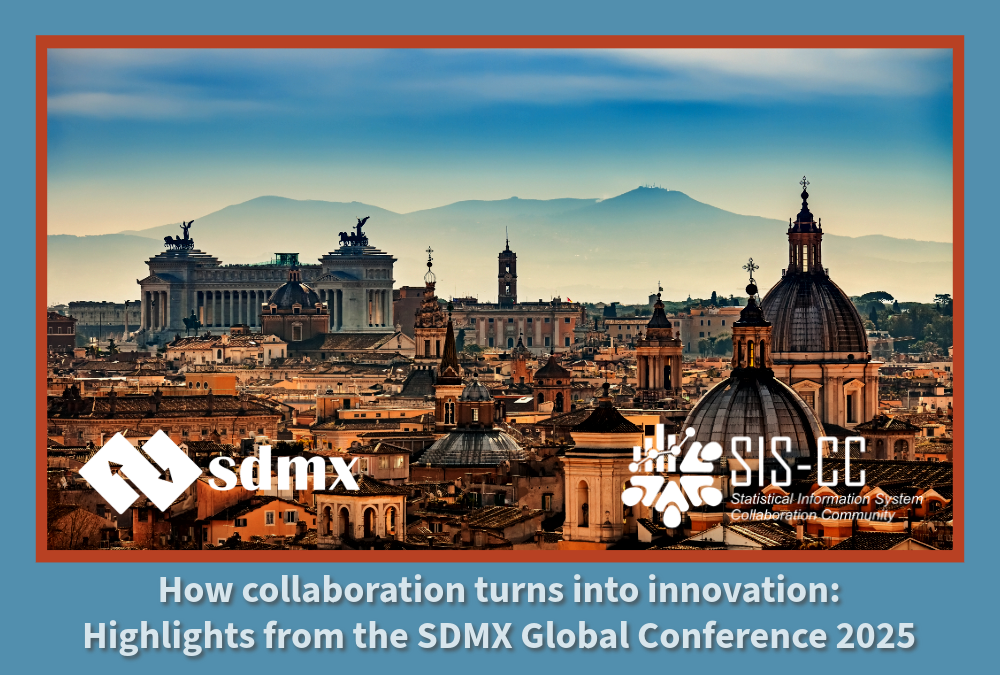
The convergence of SDMX (Statistical Data and Metadata eXchange) and Artificial Intelligence (AI) is no longer a distant aspiration — it is already reshaping the landscape of official statistics. At the 2025 SDMX Global Conference in Rome Italy, experts from across the statistical and technology communities explored how these two forces are working together to transform data workflows, reporting, and dissemination.
Let’s summarise the key insights from those discussions, explaining why this convergence matters, the opportunities it presents, and the challenges that must be addressed to realise its full potential.
Why this convergence matters
The demand for timely, high-quality data has never been greater. Policymakers, researchers, and citizens rely on accurate statistics to make informed decisions. At the same time, AI is revolutionising how we process and interpret data — automating repetitive tasks, generating insights, and improving accessibility.
However, AI requires structured, interoperable data to function effectively. This is where SDMX can play a crucial role: by providing a global standard for statistical data and metadata, SDMX lays the foundation for AI-driven innovation in official statistics (cf. Keynote Speech: Dr. Georges-Simon ULRICH, Director General, Swiss Federal Statistical Office – draft resolution on “Enhancing AIReadiness of Official Data and Statistics” to be presented at the next session of the UNSC).
Key themes from the conference
AI-Readiness of SDMX Data
One recurring question was: Is SDMX data ready for AI? (cf. SDMX Data AI-ready? Is AI SDMX-ready? by Jens DOSSÈ, OECD) The answer: almost—but not entirely. To unlock AI’s full potential, SDMX datasets must have:
- Complete metadata for context and interpretation;
- Semantic consistency to ensure machine learning models understand relationships;
- Accessible official data sources (registries) that feed structured data into AI pipelines.
AI integration
AI brings immense power—but also responsibility. Interventions emphasised transparency in algorithmic decisions, the need for bias mitigation to avoid skewed results, and cultural sensitivity, as demonstrated by early experiments in the Pacific region (cf. Enhancing SDMX Workflows with Ethical AI: Early Experiments from the Pacific by Phil BRIGHT, Giulio DALLA RIVA and Denis GROFILS, Pacific Community), where ethical frameworks guided AI-enabled SDMX workflows.
Automation and modernisation
AI is accelerating modernisation through SDMX-compliant pipelines, reducing manual effort and improving timeliness. Generative AI is able to draft analytical reports from labour market data (cf. Labor Market Intelligence — Drafting Analytical Reports from SDMX Data Using Generative AI by Shutong DING, ILO), freeing analysts to focus on interpretation rather than formatting.
Enhanced dissemination and discovery
AI is not only about analysis — it is about accessibility. Improved SDMX modelling enhances user experience through AI-assisted metadata generation, as seen in the Bank of Greece case (cf. Documind x READ – GenAI-assisted Structural Metadata Generation for Bank of Greece’s Internal Data Hub by Costas POLYCHRONOPOULOS, Nassos OURENTAS, Tasos THOMAIDIS, Georgios STAVROULAKIS, Marina GEORGIADOU, Bank of Greece, and George VEROUCHIS, Thanos GKINAKOS, Christos GKATZIS, D-ONE), and speeds up internal data hub development and interoperability.
Opportunities and challenges
The convergence of SDMX and AI opens doors for statistical organisations to report faster, enrich analytics, and improve governance, provides Data (AI) practitioners access to standardised, high-quality datasets for model training, and policymakers access to more timely and contextualised insights for evidence-based decisions.
To realise these benefits, we must tackle governance frameworks for ethical AI use, capacity building for integrating AI into SDMX workflows, and interoperability across diverse systems and organisations.
The message from the conference was clear: collaborate across statistical offices, technology providers, and the SDMX community, experiment with AI-enabled SDMX workflows through pilots and prototypes, share best practices and lessons learned to accelerate global progress, and ensure accessible official statistical sources are used by AI/LLMs.
The future of official statistics is AI-powered and SDMX-enabled — and it starts now.


